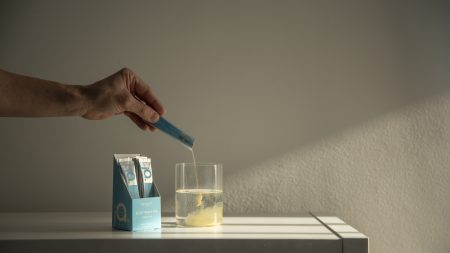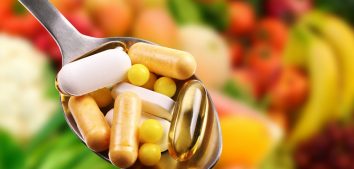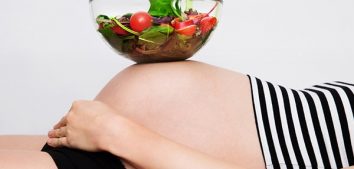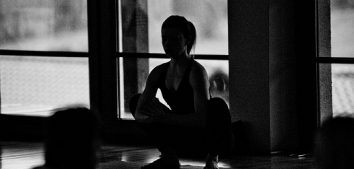
Do You Stay Hydrated?
I love sunny weather and the possibilities it gives. There are lots of benefits to it but also… duties! During heatwaves I try to use sunscreen on a regular basis, protect my hair from high temperature and salty water, but most of all take care of my body from the inside: have nutritious meals and drink the right amount of water.
And I would like to remind you about hydration today, because summer is the perfect time to develop the habit of drinking fluids regularly. Why? You’re just about to find out 🙂
How Much Should We Drink?
Let’s start with the basics, i.e. the recommended amounts of fluids that we should drink every day. The Polish recommendations of the National Institute of Public Health – National Institute of Hygiene (NIZP-PZH) are consistent with the recommendations of experts from the European Food Safety Authority (EFSA). The recommended daily amount of fluids for women is 2 liters. Men, however, should drink about 2.5 liters of fluids a day.
Importantly, when talking about fluid intake, I mean water contained not only in drinks, but also in all other food products. Some fruits and vegetables contain up to 95% water (watermelon, strawberry, lettuce)! This is one of the reasons why it is worth including them in your diet during hot weather.
Why Is It So Important?
Water constitutes as much as about 60% of an adult’s body weight (about 75% in infants). We cannot store it, so we have to deliver it every day. Of course, our bodies have a number of mechanisms that aim to protect the body against dehydration. The kidneys can limit fluid excretion, but this is only a temporary solution.
The consequences of dehydration are:
- decreased physical performance,
- difficult concentration and memory,
- irritability, low mood,
- feeling weak and sleepy.
Chronic dehydration negatively affects the functioning of the kidneys, circulatory system and brain, and may lead to serious problems (formation of kidney stones, recurrent urinary tract infections, hypertension and its complications, strokes).
How to control your daily fluid intake and stay hydrated? A simple indicator that will help you assess your daily hydration is, for example, observing the color of your urine. The urine should be light yellow. If you feel thirsty, do not ignore it and drink water in small portions throughout the day. Always have water within reach so you can have it at any time. Also, remember that you can monitor your current water consumption in the Diet & Training by Ann application (HERE).
Standards Not for Everyone?
Standards for water consumption have been set at the level of the so-called adequate intake (AI), which means that this is an average value. It is determined when it is impossible to provide a more precise standard, which is the so-called recommended intake. What’s the practical conclusion from this? We all have our own individual needs which may change depending on various factors. Nevertheless, it is worth oscillating around the recommended values (2 liters of fluids for women and 2.5 liters of fluids for men), which should be treated as a reference point.
The factors we have to consider when adjusting our water intake include our weight, age, health and physiological condition (the demand increases during pregnancy and breastfeeding), air temperature and humidity, as well as physical activity.

The Role of Hydration During Workouts
It is suggested that even 1% dehydration may reduce exercise capacity! Even a mild level of dehydration may cause the athlete to feel increased fatigue, reluctance to continue exercise, and decreased concentration. Their thermoregulatory abilities will also suffer, and as we know, every nuance counts in professional sports. Professional athletes often perform precise body weight measurements before and after exercise to assess the degree of dehydration and effectively prevent it. Specialists emphasize that in the context of exercise, relying solely on the feeling of thirst is insufficient and often does not reflect the body’s actual increased needs for fluid intake.
Of course, you don’t have to use such advanced strategies if you train recreationally. Nevertheless, it is worth remembering that physical exercise involves the loss of water and electrolytes, which will be of great importance, especially during hot weather.
If your training lasts up to 30 minutes, you do not need to drink any fluids or plain water is enough. It’s similar for low- and moderate-intensity activity lasting no longer than an hour, in which case water will be appropriate. However, intense workouts and those lasting over an hour require isotonic drinks.
It is also important to monitor your body and well-being on an ongoing basis. Training outdoors at high temperatures is associated with greater sweating and, therefore, a greater loss of electrolytes. Remember to prepare your body before exercise and replenish fluid losses afterwards.
If you are looking for electrolytes that you can always have at hand, check out Levann‘s offer (HERE). You will find electrolytes there in convenient pineapple or strawberry flavored sachets. It is a tasty support for the body that will help you to maintain electrolyte balance both during exercise and hot weather 🙂
Bibliography:
- Belval, L. N., i in. Practical Hydration Solutions for Sports. Nutrients. 2019; 11(7):1550. doi: 10.3390/nu11071550.
- Krauss, H. 2020. Fizjologia żywienia. PZWL Wydawnictwo Lekarskie.
- Normy żywienia dla populacji Polski i ich zastosowanie. NIZP-PZH, Warszawa 2020.
- Popkin, B. M., D’Anci, K. E., Rosenberg, I. H. Water, hydration, and health. Nutr Rev. 2010; 68(8): 439-58. doi: 10.1111/j.1753-4887.2010.00304.x.









Comments No Comments
Join the discussion…